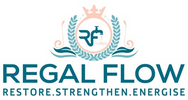
Where Is the Best Place to Put a Water Softener?
Not sure where to plonk your Water Softener? Short answer: near your main water line—think garage, utility room, or basement. It’s all about Installation & Setup done right: easy access, plumbing ease, and keeping it cosy. Curious how this affects countertop dispensers and reverse osmosis? Stick around, you’ll want to get this right.
Identifying the Optimal Location for Your Water Softener
Picking the right spot for your water softener might not be thrilling—but it makes a big difference. A smart setup means smoother operation, fewer maintenance headaches, and better performance across your home. Let’s break down what to look for before you get out the toolkit.
Prioritising Accessibility and Functionality
A water softener isn’t something you’ll check on daily. But when you do, you'll want it to be quick and hassle-free.
Easy Access for Maintenance and Salt Refills
Picture this: you’re carrying a heavy bag of salt, trying not to spill it, and then you realise—you need to crawl behind the tumble dryer to get to your softener. Avoid this scenario. Choose a spot where you’ve got room to top up salt easily, check the controls, and do routine maintenance without turning yourself into a contortionist.
Minimising Plumbing Runs
The closer your softener is to where the mains water enters your home, the better. Short plumbing runs mean less chance of leaks, quicker installation, and better water pressure. Plus, it ensures all your water—showers, taps, dishwashers, even those sleek countertop dispensers and reverse osmosis filters—gets treated.
Essential Requirements for Installation
Before you decide on a corner of the house, make sure your chosen spot ticks a few critical boxes.
Connection to the Main Water Supply
Your softener needs to be plumbed in right after the main shut-off valve. That way, it treats all the water before it’s split between hot and cold systems. If you install it after your boiler, for example, you’ll miss out on softening hot water—and your kettle won’t be happy.
Adequate Drainage
During regeneration, the softener flushes out all the nasty minerals it’s trapped. That waste water needs to go somewhere. A nearby floor drain, waste pipe, or standpipe is ideal. If it’s not already there, you may need a plumber to fit one. Don’t risk flooding the area—it’s not worth the hassle.
Power Source (if needed)
Some systems are non-electric, but many require a standard 240V socket to power timers and smart controls. If yours needs plugging in, make sure there’s a safe and nearby socket. No one wants to trail an extension cord through the utility room like it’s Christmas lights.
Comparing Potential Locations
So, where are the most common—and most practical—spots to install a water softener? Let’s weigh up the usual suspects.
Pros and Cons of Different Areas (Basement, Garage, etc.)
Basement
Pros: Usually close to the water main and drains, protected from weather, plenty of space
Cons: Risk of damp or flooding if the basement isn’t well sealed
Garage
Pros: Easy to access, often has enough room, near the main water line in many homes
Cons: Can get too cold in winter—insulation or a heated enclosure may be needed
Utility Room
Pros: Good access, already plumbed in most cases, near electrical outlets
Cons: May feel a bit cramped if space is already tight with other appliances
Kitchen or Bathroom Cabinet
Pros: Option for flats or very small homes where space is limited
Cons: Tighter installation, not ideal for larger units, limited airflow
Outdoor Installation (UK)
Pros: Saves indoor space, good for compact homes
Cons: Needs full weatherproofing, pipe insulation, and ongoing checks—can be fiddly in British winters
For most UK homes, the garage, utility room, or basement offer the best mix of practicality and protection whilst under sink installations are getting more and more common.
Conclusion: Finding Your Water Softener’s Ideal Home
Getting the placement right isn’t just about convenience—it’s about long-term performance. Put your softener close to the main water supply, where it’s easy to reach, safe from weather, and backed up with proper plumbing and drainage. Whether it ends up in the garage, basement, or tucked neatly in a utility room, the goal is to make maintenance simple and ensure your entire home benefits from softened water. And remember—your reverse osmosis system and countertop dispensers will love you for it. Softer water, fewer limescale headaches, and a happier home? Sounds like a win to us.
👋 Prefer to talk it through? Our water specialists are ready to help — reach out today and get clear, honest advice. Call 0121 630 1130, info@regalflow.co.uk, or click the green WhatsApp icon.
More Water Softener Articles You’ll Want to Read
Can You Fit a Water Softener Yourself?
Can a Plumber Fit a Water Softener?
Where to Install a Water Softener


Leave a comment